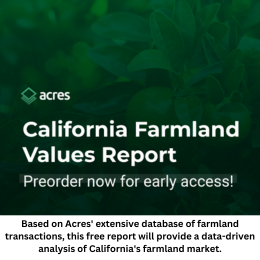January 26, 2018
Hatch, the first aquaculture-focused accelerator in the world, has been launched in Bergen, Norway, by Dr. Carsten Krome of Alimentos Ventures.
Although there exists the Dutch, pure-play sustainable aquaculture investment fund Aqua-Spark, and the Tze Venture Search Fund for Aquaculture Technology – a new fund dedicated to backing and growing aquaculture feed innovations in the aquafeed ingredients sub-category launched last year by aquaculture investor, David Tze – among other funds, unlike the broader agriculture and animal protein sectors, aquaculture has been seemingly lacking incubator-stage support.
“We see a need for aquaculture start-ups, especially in the health, nutrition, technology and production sectors, to learn what it means to be ‘investment-ready’ in order to raise the necessary funds to scale and realise their full potential,” said Hatch CEO Carsten Krome.
Answering the call, Krome launched Hatch in Bergen, Norway, and partnered with NCE Seafood Innovation Cluster and Bergen Teknologioverføring (BTO) to offer innovative early stage aquaculture startups support in the form of capital and business support.
“The Bergen environment is perfect for innovative aquaculture start-ups. The headquarters of major industry players like Marine Harvest, Grieg Seafood, Lerøy Seafood Group, Cargill Aqua Nutrition and others are all based within walking distance of the accelerator venue. They are all important partners in the NCE Seafood Innovation Cluster, which is also where our offices are situated and we are working very close with. The Hatch programme is a fantastic opportunity for us to further attract international and local innovation to the area,” said Anders Haugland, CEO of Bergen Teknologioverføring (BTO).
Beginning with its first cohort this April, Hatch’s first eight-member cohort will partake in a three-month long intensive program that includes housing at BTO, €25,000 (US$36,000) in funding, coaching, and access to Hatch’s network of entrepreneurs, industry professionals, and the industries top farmers and suppliers, as well Hatch’s support in securing additional grant funding in Norway, and the ability to conduct product trials with the incubator’s R&D partners located across Europe.
“Additionally, teams will also have completed significant technical proof-of-concept work either in the laboratory or with our technology/farming partners,” noted Krome. “Ultimately, the primary focus of our accelerator will be on building capability in our participants and enabling them to scale their company to match their global ambitions. What we require in return from the founders is 100 percent commitment in terms of time and effort.”
The Pressure’s On
Driven by macro-trends that include population growth, shifting wealth distribution, and changing dietary demands toward more protein content, investing in aquaculture in emerging markets is becoming a topic earmarked for investors discussion.
“Since 1960, global demand for seafood has increased 3.2 percent annually, outpacing the 1 percent annual growth in the world’s population over the same time period,” noted Philippe de Lapérouse, managing director of HighQuest Group in the piece Technology Plays in Aquaculture published in the GAI Gazette.
Rising global populations and increasing wealth – particularly in emerging economies – along with diminishing wild fish numbers have put pressure on the aquaculture industry to fill the gap in supply.
Predictive modeling by The World Bank estimates that 2030, 62 percent of food fish will be provided through aquaculture, and from 2030 onward, aquaculture will dominate supply in the industry, according to the report, Fish to 2030, Prospects for Fisheries and Aquaculture.
At GAI AgTech Week 2017 conference, a panel moderated by HighQuest Group Managing Director Philippe de Lapérouse, and including Max Holtzman, chairman of Capitol Peak Asset Management; Mark Luecke, managing director and CEO of Prairie AquaTech; angel investor and KnipBio COO Jessica McLear, and chairman and CEO of Ynsect Antoine Hubert – noted that aquaculture growth exceeds that of other animal proteins, especially in the developing world.
Data from the UN Food and Agriculture Organization (FAO) states that global aquaculture output hit 73.8 million tons in 2014. Leading in output is China, however, the organization finds that growth in other emerging countries is quickly outpacing that in China. Aquaculture production in Nigeria, for instance, has increased 20-fold in only the past 20 years, and growth in the rest of sub-Saharan Africa is close behind, according to the organization.
This growth, along with the fact that aquaculture is a much broader investment space than say, beef or poultry, gives patient investors with a thematic mindset the opportunity to invest in a range of categories within the sector including breeding, gene editing, waste management, water quality, production tech, protein conversion, or value-added processing.
“Given that the aquaculture industry is relatively nascent compared to other food animal production systems, there are many areas that investors can consider for investment,” said de Lapérouse. “This spans from developing new feed ingredients to replacing declining supplies of fish meal, to developing new technologies or new genetic strains of fish or management production systems.”
– Lynda Kiernan
Lynda Kiernan is Editor with GAI Media and daily contributor to GAI News. If you would like to submit a contribution for consideration, please contact Ms. Kiernan at lkiernan@globalaginvesting.com.

Let GAI News inform your engagement in the agriculture sector.
GAI News provides crucial and timely news and insight to help you stay ahead of critical agricultural trends through free delivery of two weekly newsletters, Ag Investing Weekly and AgTech Intel.




